Where physical therapy ends and magic begins: Healy Physical Therapy and Sports Medicine
“He helped my daughter get from being bedridden to going back to college,” says Michele Pestana when I meet her at Healy Physical Therapy and Sports Medicine in Providence, Rhode Island, on a hot summer day in July 2022. Pestana is 47 years old and has EDS, like most of Dr. Michael (Mike) Healy‘s patients. She is one of Healy‘s regulars and has come to his practice for more than eight years. “After I was diagnosed, I saw Mike [Healy] talk at an EDS conference and just felt like he had the right ideas on how to treat people with EDS,” Pestana states. When she started working with Healy, most of her joints were subluxated and previous physical therapy has made her symptoms much worse. “Nobody told me that the exercises I did and how I executed those were wrong for someone with EDS. I had to relearn everything – from posture to walking and breathing.” Over the years, Healy additionally helped her recover from multiple surgeries – Tethered Cord, CSF Leaks, hysterectomy and oral surgery. “I couldn‘t even walk half a mile back then, but now I can walk three!“
Shortly after, I met Michele Pestana’s daughter, Zoe, too, who lives with cEDS, POTS, cervical spine instability, besides many other comorbid conditions. Her neck issues and POTS were so severe that she used a wheelchair for a year and had to drop out of school. After intensively working with Healy, she is now in her third year of a PhD program in California, working 60-hour-weeks, hiking with friends in her free time and living a full life. “That is what happens when you have a PT who knows what‘s best for your body,“ Michele Pestana says. “He truly changed my life,“ her daughter adds.
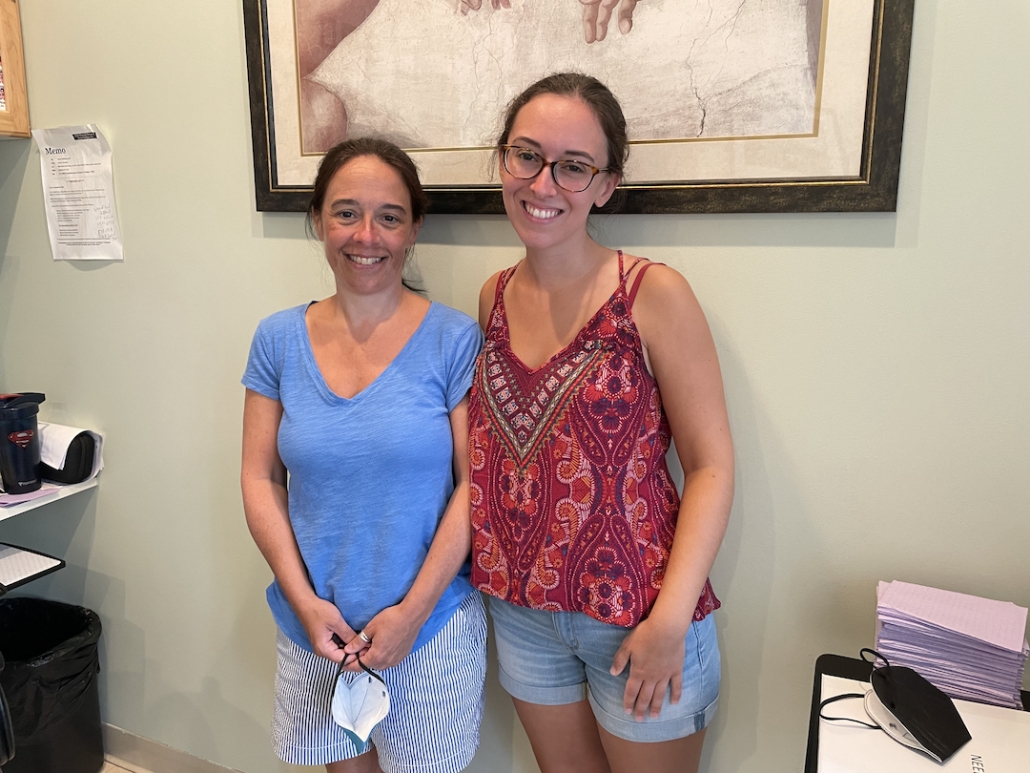
Michele and Zoe Pestana are only two of many long-term patients of Healy‘s – some of whom I will meet over the course of the day while shadowing him. What they all have in common: nobody has anything but praise for Dr. Healy. Healy is one of a handful of physical therapists experienced in treating people with EDS, and those experts are much rarer than the occurrence of the connective tissue disorder itself. Unfortunately, the majority of EDS patients – especially those outside of the US – do not have access to physical therapists with EDS knowledge, which makes the difference between a successful PT session and causing further damage to the person’s body. Being treated by someone unfamiliar with the fragility of the connective tissue can be useless at best or cause permanent damage to an EDSer’s joints at worst. As Dr. Healy likes to say, “There is no cookbook on how to treat a patient with EDS.” Each person has individual issues and needs that only an EDS-experienced PT can accommodate. With that in mind, patients from all across the world contact Dr. Healy to at least get a piece of his wisdom.
| Neurological/orthopedic complications: – Craniocervical instability (CCI)/instability of the lower cervical spine – Instability of other parts of the spine, especially the lumbar spine and sacroiliac (SI) joints – Scoliosis – Headaches – Temporomandibular joint dysfunction (TMJ) – Joint subluxations/dislocations/pain – Thoracic outlet syndrome (TOS) Others: – Gastrointestinal discomfort and pain – Compression syndromes, for example, median arcuate ligament syndrome (MALS) – Gynecological symptoms and pain – Dysautonomia – Generally benefits proprioception, balance, posture, motor function, muscle tone and strength and mental health |
People are traveling to Rhode Island from other states or even countries to finally, and often for the first time in their life, get treated by someone who understands EDS. Gabbrielle M. Jackson is one of those patients who drives down from New Hampshire to Rhode Island regularly to see Dr. Healy and his team. Jackson stays for a few weeks, during which she receives daily treatments for neurological complications of EDS, such as cervical spine instability and POTS. With Healy’s help, she hopes to avoid fusion surgery for as long as possible. Before she has her 21st session today, Healy asks how Jackson has been feeling after her last visit – as he does with all his patients. “Not so great for a few days after,” she responds, “but then much better.” However, over the last couple of days, her pain has constantly been increasing again, especially her headaches, she explains. Healy has her lie down on the back before he takes her vitals because Jackson’s dysautonomia greatly affects her treatment process.
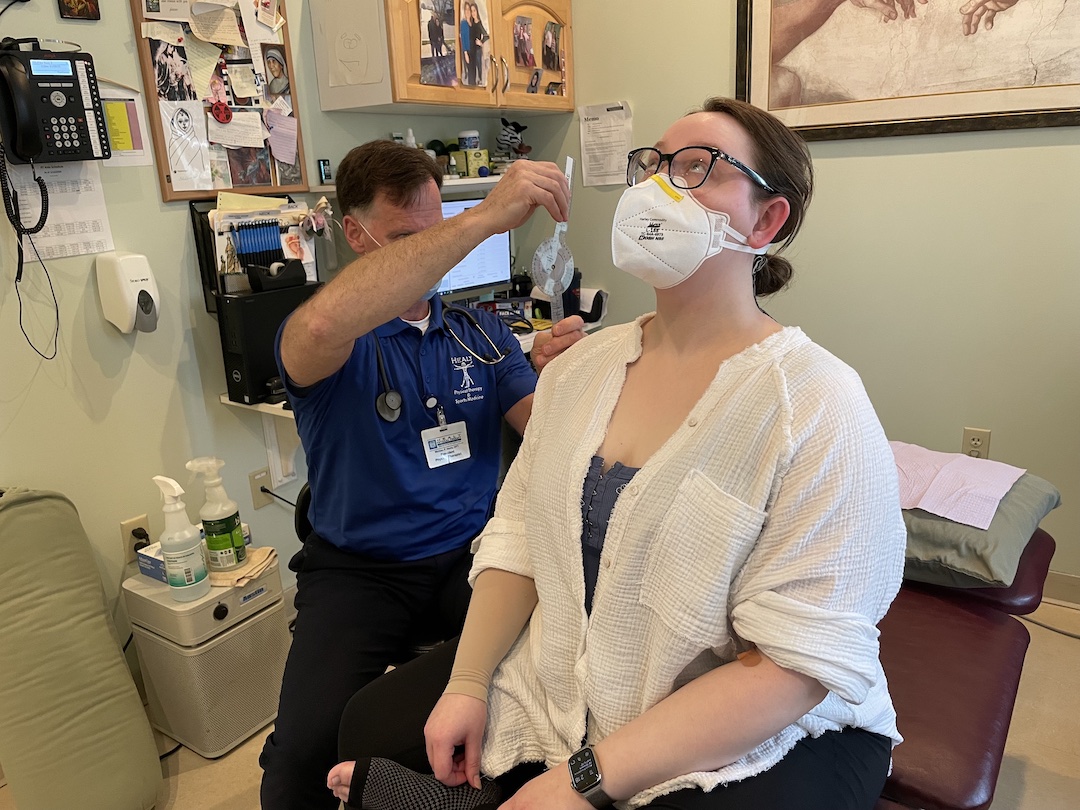
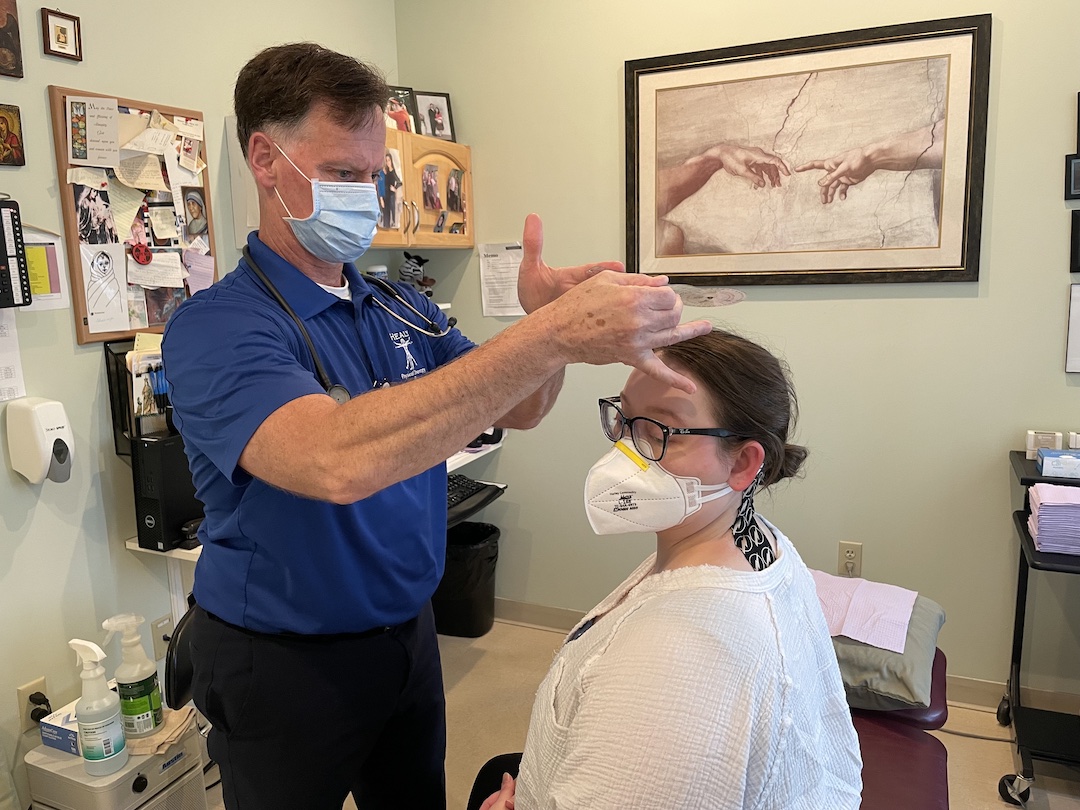
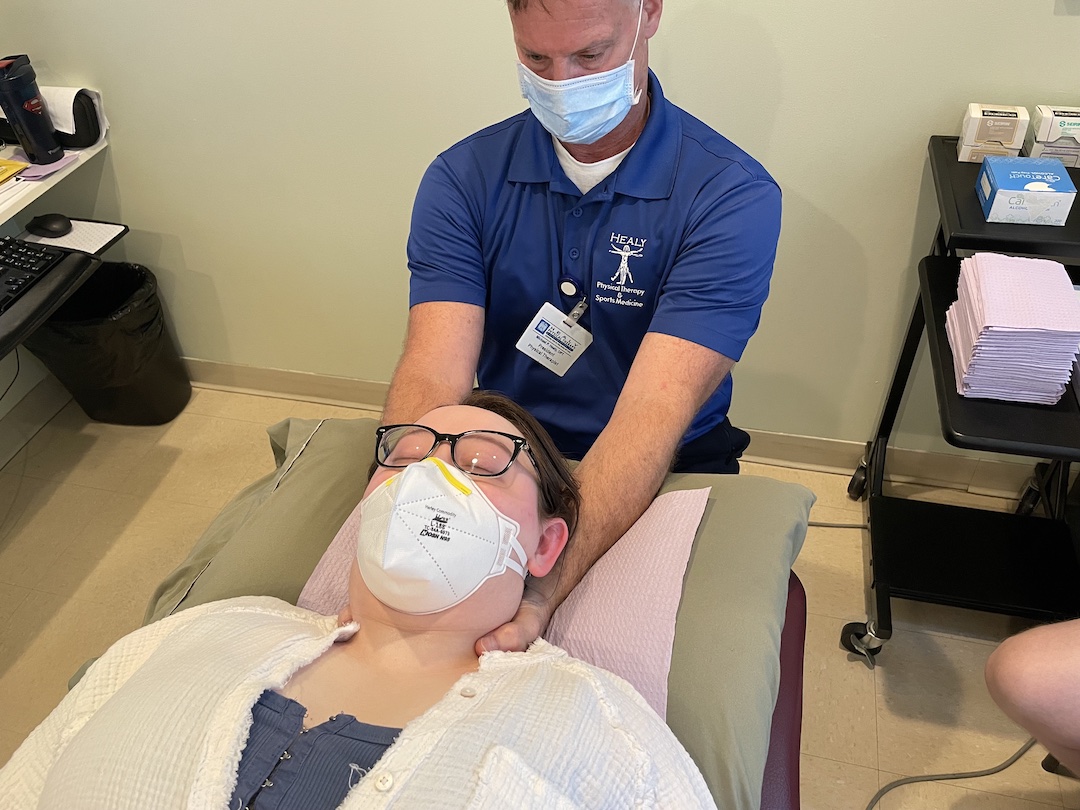
Every single session, Healy treats all systems of the body. For Jackson, this means he first aligns her hips, then goes up to the thoracic spine and shoulders, followed by the neck and head. Healy wanders from bottom to top and always treats the whole body because if the lower back isn‘t aligned, the neck won‘t be either – everything is connected by – you guessed it – connective tissue. He is using a combination of different techniques, from osteopathy to manual therapy, for instance, myofascial release and muscle energy techniques. While Healy treats Jackson, he is inhaling and exhaling deeply, sometimes with his eyes closed, like he is listening to what the person‘s body tells him. You can barely see his hands move, besides a slight vibration sometimes. But then, all of a sudden, you hear a plop and witness a joint going back into its correct place – this is clearly visible through a change in posture – with the patient sighing in relief. What Healy does looks effortless and exhausting at the same time, and I can only describe it as magic.
After the 30-minute session, Jackson has no more headaches and feels much better, which, in fact, I heard from all of his patients that day: nobody left without significant improvement. For most people I observed, the number on the pain scale they shared before the treatment went down at least 50 percent. And that’s without the use of any medication, only through conservative measures. When Healy is finishing up with Jackson, he asks, “What‘s wrong with your wrist?” “It feels a bit out of place, yeah,” she responds. A minute later, her wrist is back in the proper position, and she smiles.
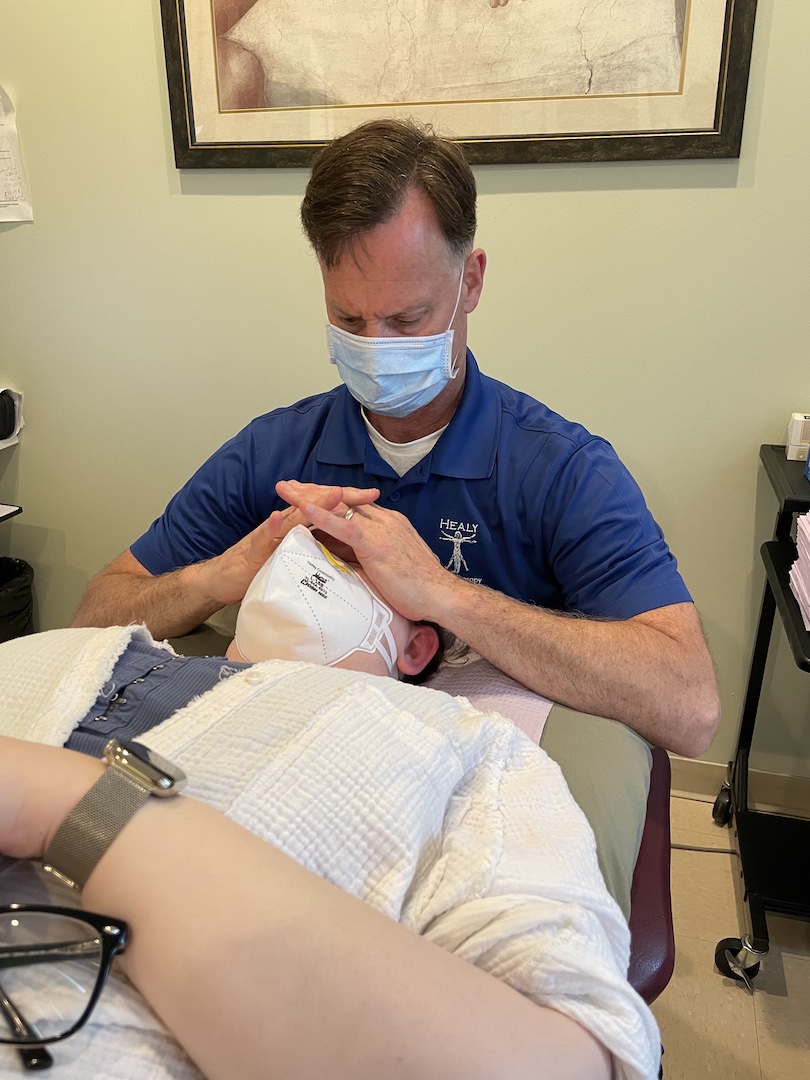
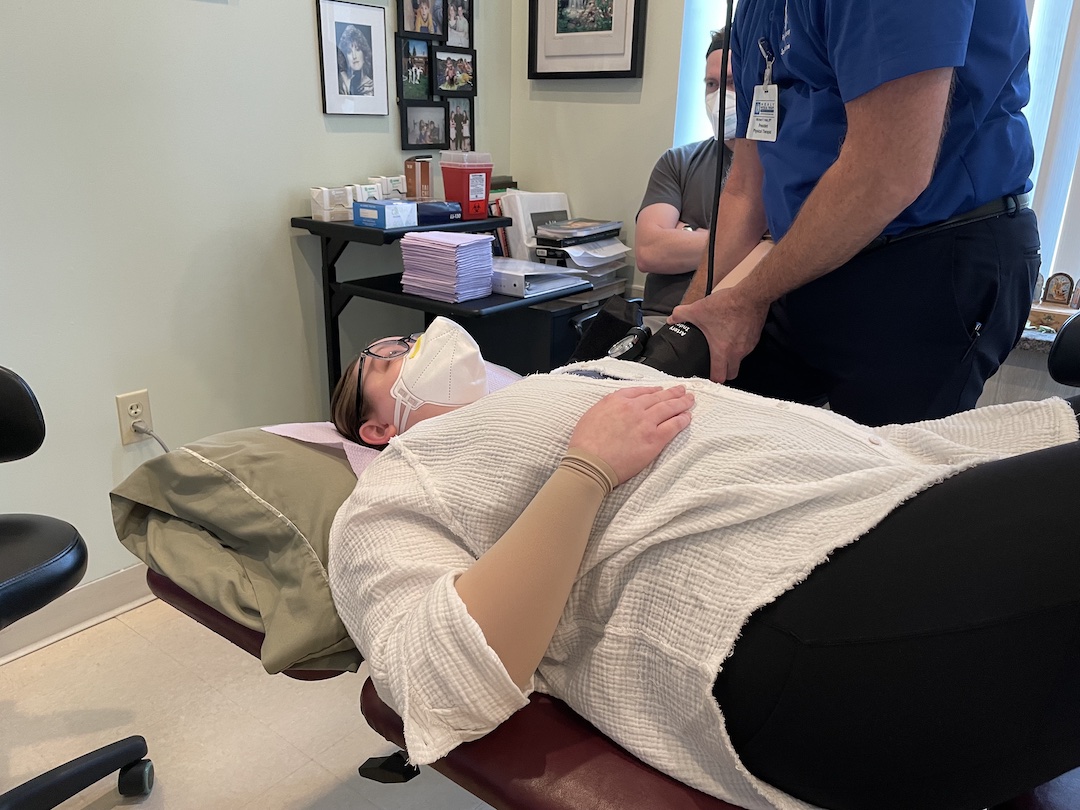
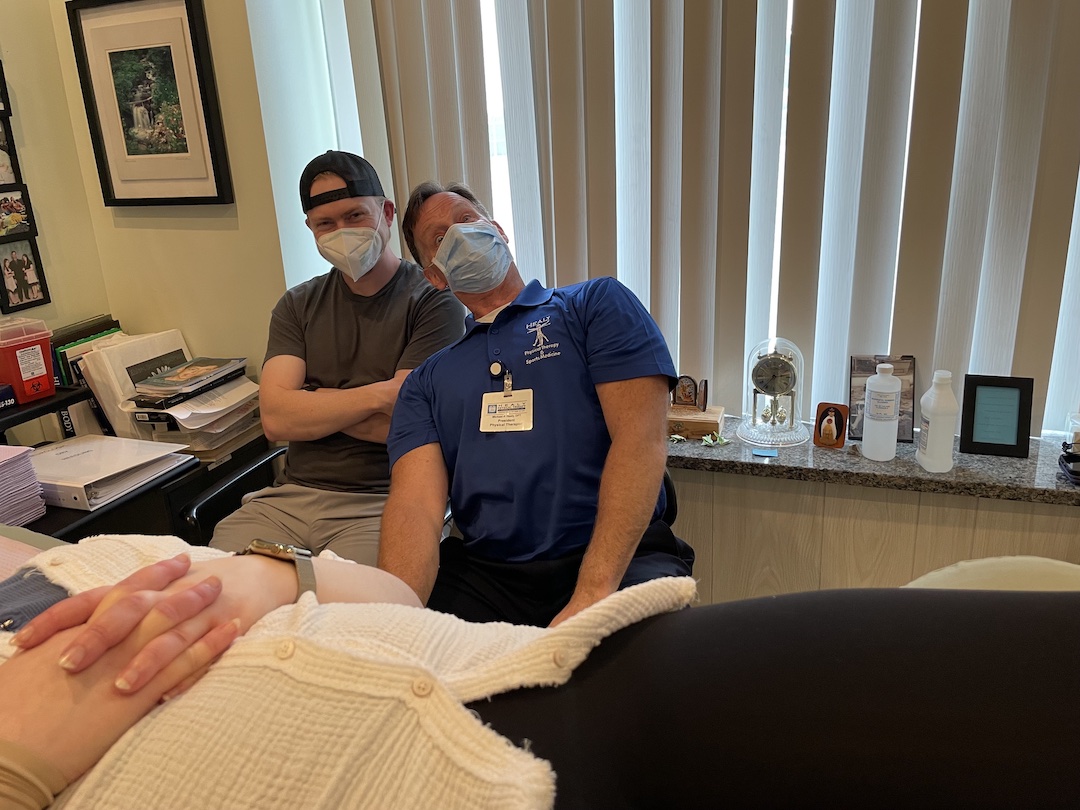
And for the first time in my life, I feel envious of all the people that can see Healy every week and have this temporary or even permanent relief of pain. I want to clone him so that each country in the world could have an expert PT for EDS too. At the same time, I am so happy for all his patients and grateful that we have at least one Dr. Healy. When I ask him why Healy Physical Therapy and Sports Medicine has specialized in such a rare condition – it’s not your most obvious choice as a young PT, one might think – he laughs and says the decision was made for him by his very first patient with EDS who pushed him to learn about EDS. I laugh because that sounds very much like every person with EDS I know. We always are up for educating the people around us. Healy remembers first treating her in 1998. He quickly noticed she was hypermobile, but back then, he didn‘t know what that meant. Six years later, she called and told him she had been diagnosed with EDS. “She printed 300 pages about EDS and wanted me to read them. I told her I didn‘t have the time to do that, but she insisted, and so I did what she asked me to!” The rest is history. While other PTs may see one or two EDS patients in their practice in their whole lifetime, Healy’s schedule barely has anyone on it without EDS. He has around 4000 treatment sessions a year, with 85 percent thereof having EDS.
Healy Physical Therapy has four offices in Rhode Island, with the main one in East Providence. All have several private treatment rooms and a large exercise room in the center with a treadmill, resistance bands, gymnastic balls and much more. All EDSers start with a one-on-one treatment to align their joints first. Once the body is in its physically most advantageous position, they move to the exercise room, where they continue to train their muscles to gain strength. Every person has their own program specific to their symptoms, energy and pain levels, and ability. “The number one complaint most people with EDS have is pain. Right after comes fatigue. Those need to be considered in addition to their comorbid conditions, like POTS, for instance, when putting together an exercise program,“ Healy shares. For example, due to Jackson‘s cervical spine instability and severe POTS, she exercises with her neck brace on to avoid further injury to her spine. More importantly, though, she does not exercise in an upright position. Healy places her at a 45-degree angle to allow her body to adjust slowly to the exercises and avoid POTS flare-ups. Once she tolerates this position well, the table will be inclined step by step until Jackson can sit or stand upright while executing her program.
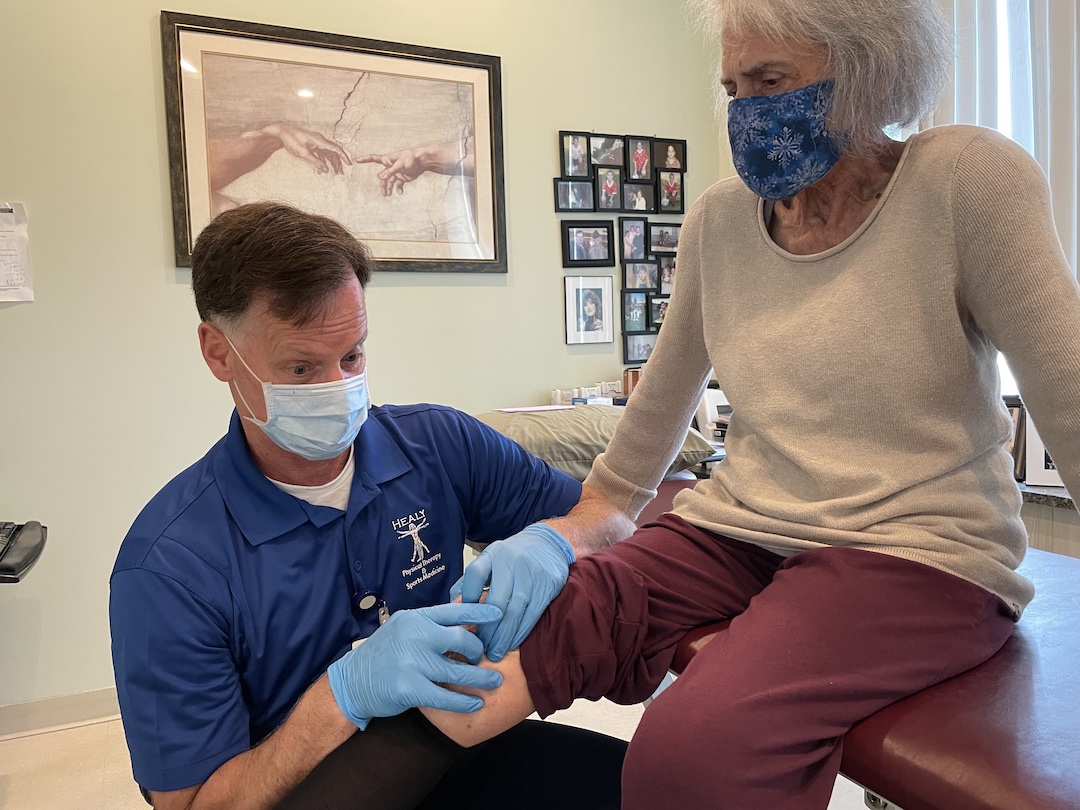

| General: – Pilates [1] – Low-impact exercises [2]: recumbent biking/biking, swimming (on the back to avoid hyperextension of the neck) – Osteopathy/manual therapy [3]/craniosacral therapy – Hydrotherapy [4] – Myofascial release – Other activities/therapies: Tai Chi/Qi Gong, Taping [2], Dry Needling [5], Tens [6], balance board/SUP Used by Dr. Healy: – Muscle Energy Techniques – Myofascial Release – Manual Therapy – Craniosacral Therapy – Visceral Manipulation – Neuromuscular Re-education – Therapeutic Exercise (with proper progression) |
Another person I observed who was treated by Healy came in close to tears after she had a bad fall a few days ago. As an aging EDSer, she used an electric wheelchair and was barely able to move her body due to several subluxations. She reported a pain level of an eight before treatment. When she spoke, her voice was a shivering whisper. One could feel the incredible amount of pain she was in. After a relocation to the treatment table, Healy started treating the right side of her body, where she experienced less pain. He says he always works on the better half first in order to calm down the autonomic nervous system, which reduces overall pain in the body. After the 40-minute session, her joints were aligned again, the woman was smiling, and her pain was down to a four.
| – Healy always treats every part/system of the body – from bottom to top – while starting with the better side of the body to calm the autonomic nervous system first. – If the hip isn’t aligned, the neck won’t be either. – The body needs to be aligned before any exercises can be executed because only an aligned body is physically the strongest. – After aligning the body, the person with EDS should train their muscles to gain strength based on an individual training protocol. – Every person with EDS is different. There is no “cookbook” on how to treat them. Every treatment plan is based on personal symptoms and comorbidities. – Specific comorbid conditions, for example, POTS, need different protocols. For instance, people with POTS don‘t exercise in an upright position in order to avoid POTS flares. They start at a 45-degree angle and slowly train their way up to an upright position. If they have CCI, they exercise with their neck brace on. |
Even after having treated four people, Healy did not slow down. He gives every person entering his office the same amount of attention and care. I ask him how he copes with the never-ending stream of new patients and does he have such a thing as a private life? He smiles and responds, “Well, I get up at 5 AM to be able to treat as many people with EDS as possible.“ I’m immediately wondering which EDSer can handle treatments that hour but then I realize that if an expert like Dr. Healy would offer me a 5 AM appointment, I‘d likely take it too. Stunned, I ask him if this isn‘t too exhausting for him in the long run. Again, he smiles and says, “You know, I used to work seven days a week, 60-hour weeks, and in my free time, I would volunteer to coach sports teams. I don‘t do this anymore, though.“ And all of this he does to accommodate as many people with EDS as possible. Healy also ensures to pass on his knowledge to all therapists throughout the practice. So everyone has at least some level of understanding of EDS and the basic Dos and Don’ts of treating a person with the condition. Additionally, he gives talks and lectures for several organizations focusing on EDS and comorbid conditions.
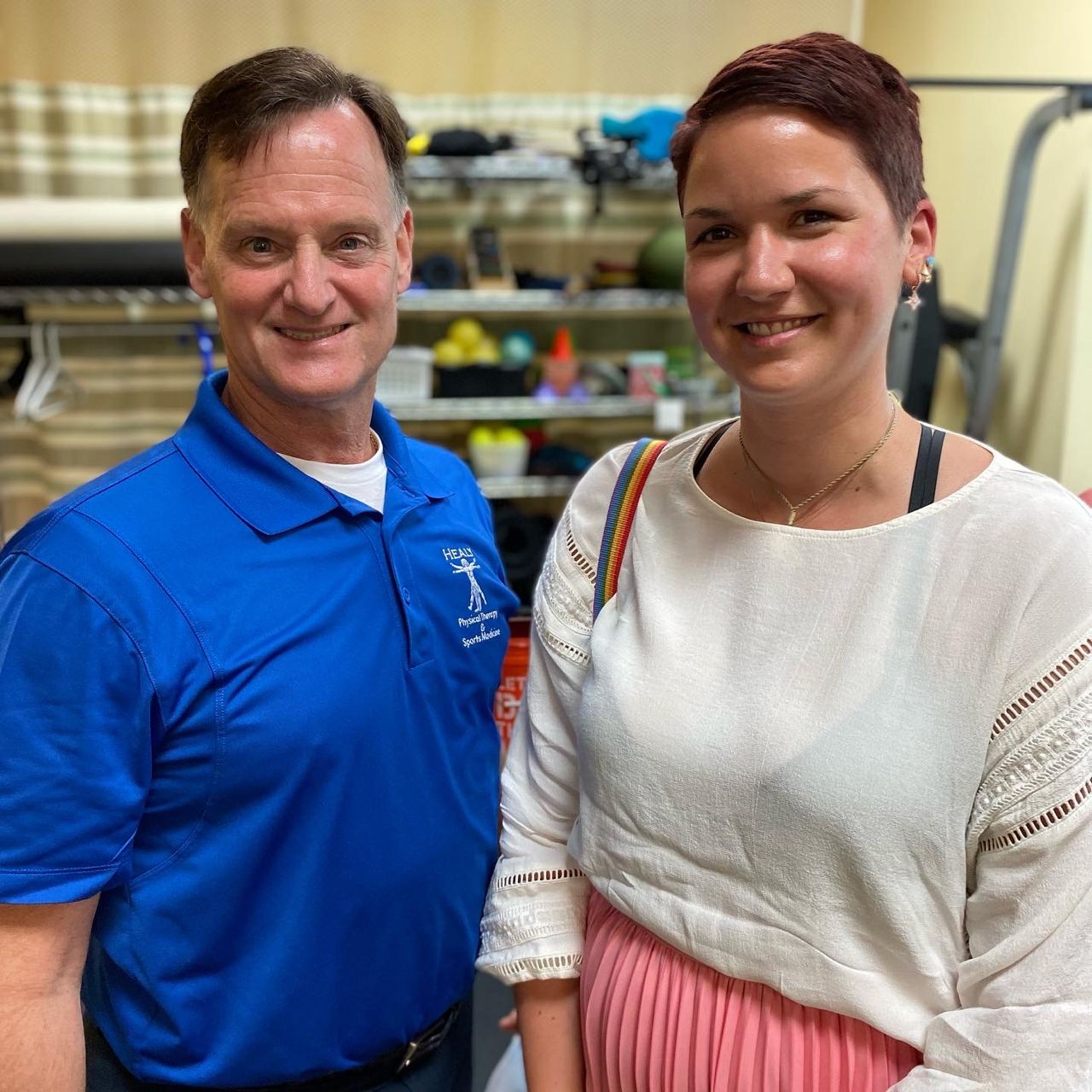
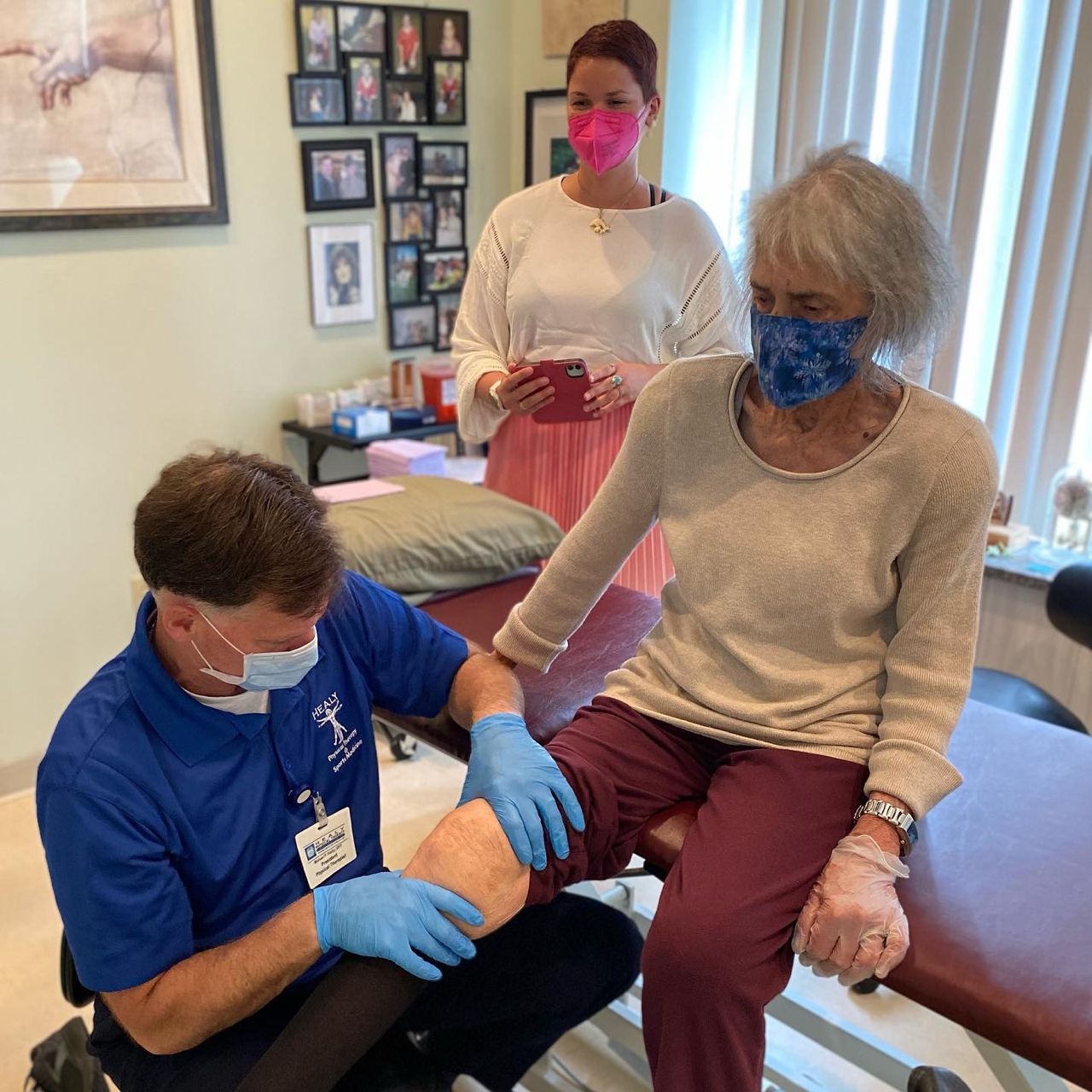
To me, having been here felt like I had just won the lottery. Seeing how his patients don’t have to explain their condition to him because he understands, realizing that nobody here needs to advocate to get adequate treatment, to avoid harm because they trust Dr. Healy to know best, almost makes me cry. His offices offer much more than “just” physical therapy. It is a place where EDS patients are seen, heard and understood, and that’s as important as the treatment itself. And as much as I like to call him “Magic Mike” now, in the end, what he does is not magic; it‘s his dedication, his willingness to permanently learn with and from EDS patients, working when the sun rises in order to treat one more person and all the compassion and admiration Healy has for every person with EDS stepping into his office. Come to think of it again, maybe this is magic, though? Or how many people like Healy do you know?
Sources:
[1] Di Bon, J., 2017. Strengthen your Hypermobile Core with Pilates. Ehlers-Danlos Society Conference Las Vegas. Online: https://www.ehlers-danlos.com/wp-content/uploads/Di-Bon-Strengthen-Your-Hypermobile-Core-with-Pilates-S.pdf
[2] Ericson Jr, W.B. and Wolman, R., 2017, March. Orthopaedic management of the Ehlers–Danlos syndromes. In American Journal of Medical Genetics Part C: Seminars in Medical Genetics (Vol. 175, No. 1, pp. 188-194).
[3] Engelbert, R.H., Juul‐Kristensen, B., Pacey, V., De Wandele, I., Smeenk, S., Woinarosky, N., Sabo, S., Scheper, M.C., Russek, L. and Simmonds, J.V., 2017, March. The evidence‐based rationale for physical therapy treatment of children, adolescents, and adults diagnosed with joint hypermobility syndrome/hypermobile Ehlers Danlos syndrome. In American Journal of Medical Genetics Part C: Seminars in Medical Genetics (Vol. 175, No. 1, pp. 158-167).
[4] Simmonds, J.V. and Keer, R.J., 2007. Hypermobility and the hypermobility syndrome. Manual therapy, 12(4), pp.298-309.
[5] Cerezo-Téllez, E., Torres-Lacomba, M., Fuentes-Gallardo, I., Perez-Muñoz, M., Mayoral-del-Moral, O., Lluch-Girbés, E., Prieto-Valiente, L. and Falla, D., 2016. Effectiveness of dry needling for chronic nonspecific neck pain: a randomized, single-blinded, clinical trial. Pain, 157(9), pp.1905-1917.
[6] Castori, M., 2012. Ehlers-danlos syndrome, hypermobility type: an underdiagnosed hereditary connective tissue disorder with mucocutaneous, articular, and systemic manifestations. International Scholarly Research Notices, 2012.
This article was originally published as part of our Chronic Pain Partners newsletter and on the organization’s website: https://www.chronicpainpartners.com/where-physical-therapy-ends-and-magic-begins-healy-physical-therapy-and-sports-medicine/

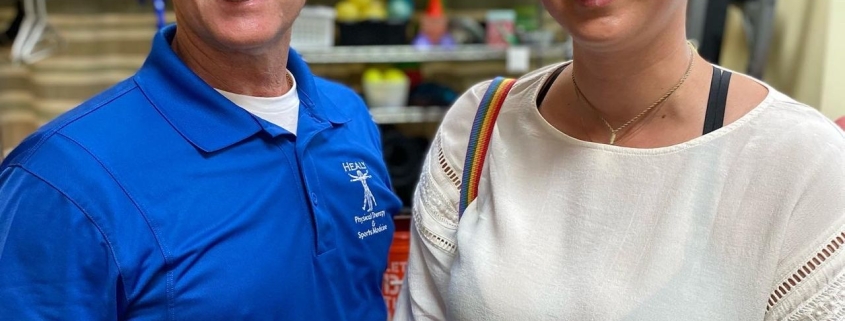






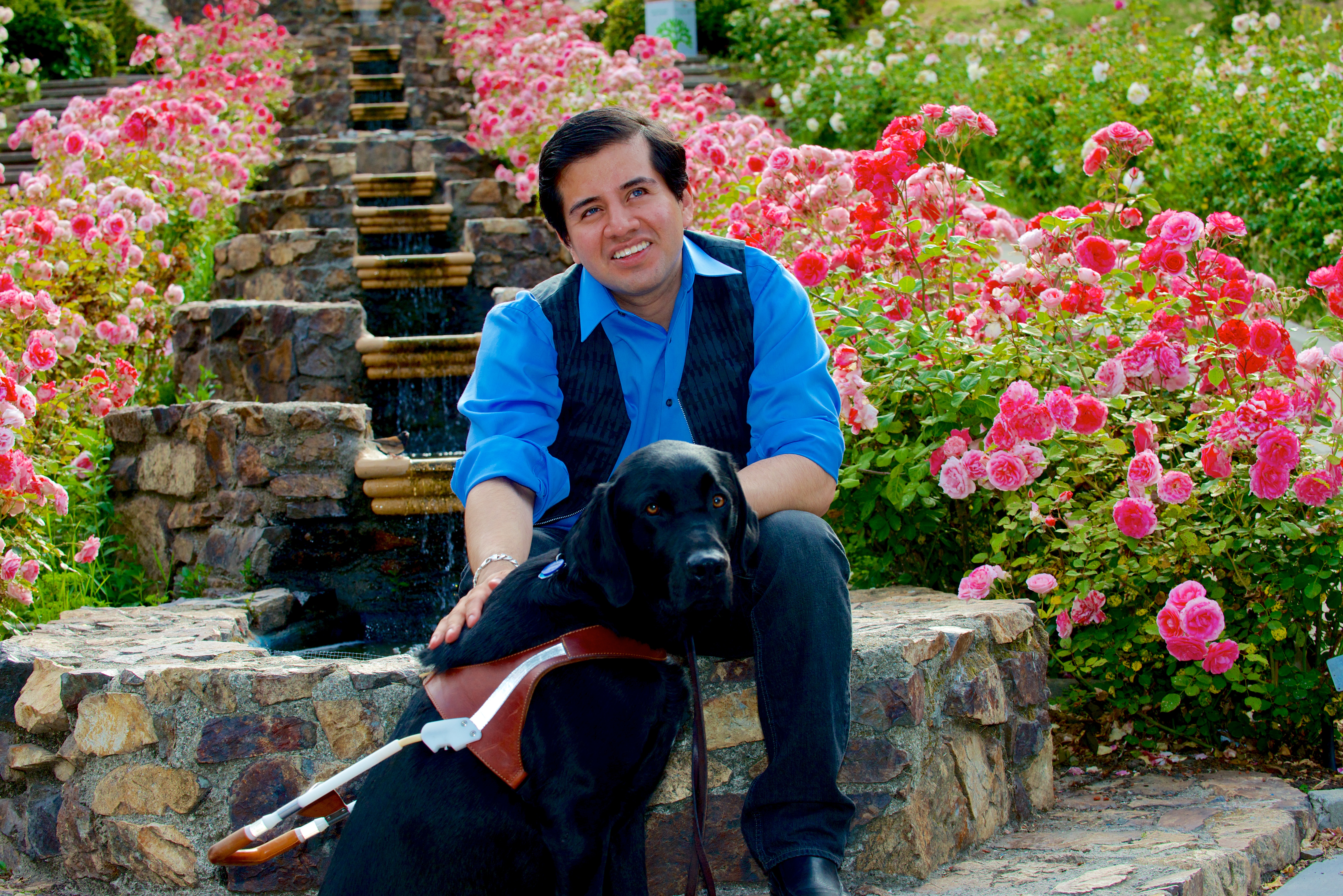

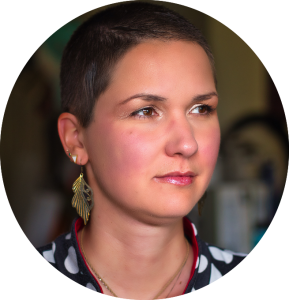


Leave a Reply
Want to join the discussion?Feel free to contribute!